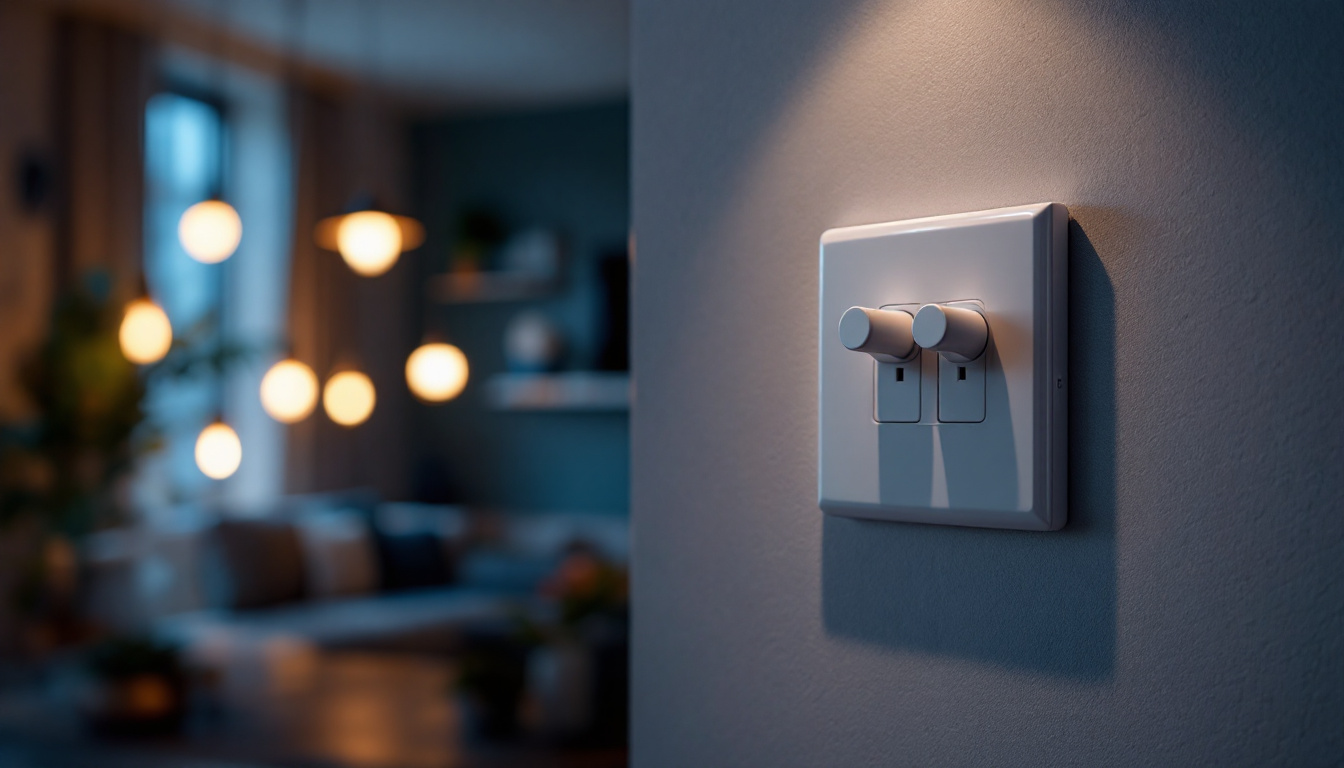
In the ever-evolving world of lighting solutions, motion detection light fixtures have emerged as a game-changer for both residential and commercial applications. For lighting contractors, understanding the benefits and applications of these fixtures can not only enhance service offerings but also significantly boost business growth. This article delves into the advantages of motion detection lighting, its applications, and how it can elevate a contractor’s business strategy.
Motion detection light fixtures are designed to automatically turn on when they sense movement within a specified range. This technology is not only convenient but also energy-efficient, making it an attractive option for various applications. By incorporating these fixtures into their offerings, lighting contractors can provide clients with enhanced security, convenience, and energy savings. Furthermore, the integration of motion detection technology can significantly reduce the risk of accidents in poorly lit areas, providing peace of mind for homeowners and business owners alike.
At the core of motion detection lighting is a sensor that detects movement through various means, such as infrared or microwave technology. Infrared sensors detect heat emitted by objects, while microwave sensors emit waves that bounce off moving objects. When movement is detected, the fixture activates, illuminating the area. This immediate response not only serves practical purposes but also deters potential intruders, as the sudden burst of light can startle them and draw attention to their presence.
This technology ensures that lights are only on when needed, reducing unnecessary energy consumption. For contractors, this presents an opportunity to educate clients about the benefits of energy efficiency, potentially leading to more sales and satisfied customers. Additionally, many modern motion detection lights come equipped with adjustable sensitivity settings and timers, allowing users to customize their lighting experience based on specific needs and preferences.
There are several types of motion detection sensors available, each suited for different applications. Passive Infrared (PIR) sensors are the most common, ideal for outdoor lighting and security applications. They are effective in detecting heat signatures and are typically used in residential settings. These sensors are particularly popular for driveway and pathway lighting, providing both illumination and security as they detect the presence of people or vehicles approaching.
On the other hand, active sensors, such as microwave sensors, are more versatile and can be used in both indoor and outdoor settings. They are particularly useful in larger areas where more comprehensive coverage is necessary. Understanding these differences allows contractors to recommend the most appropriate solutions to their clients. Moreover, some advanced systems now incorporate dual technology sensors, combining both PIR and microwave technologies to enhance detection accuracy and minimize false alarms, making them an excellent choice for high-traffic areas or commercial spaces where reliability is paramount.
Integrating motion detection light fixtures into a lighting contractor’s portfolio offers numerous benefits. These advantages not only enhance the appeal of the service but also contribute to customer satisfaction and loyalty.
One of the primary benefits of motion detection lighting is enhanced security. By illuminating areas only when movement is detected, these fixtures deter potential intruders and provide peace of mind to homeowners and business owners alike. Contractors can market this feature as a vital component of any security system, making their services more attractive.
Additionally, the presence of motion-activated lights can reduce the likelihood of accidents and injuries on properties, further adding to their appeal. Clients are often willing to invest in solutions that enhance safety, making this a lucrative selling point for contractors.
Energy efficiency is another compelling reason to recommend motion detection lighting. These fixtures consume less energy compared to traditional lighting solutions, as they only activate when needed. This can lead to significant cost savings on electricity bills, an important consideration for both residential and commercial clients.
Contractors can position themselves as sustainability advocates by promoting energy-efficient solutions. This not only attracts environmentally conscious customers but also aligns with broader trends in energy conservation and sustainability.
Motion detection lights offer unparalleled convenience. Homeowners no longer need to fumble for light switches in the dark, while businesses can ensure that employees and customers are greeted with light as they enter a space. This ease of use enhances the overall user experience, making it a desirable feature for many clients.
By highlighting the convenience factor, contractors can appeal to a wider audience, including those who may not have considered upgrading their lighting systems previously. This can lead to increased sales and referrals.
The versatility of motion detection light fixtures allows them to be used in a variety of settings. Understanding the different applications can help contractors tailor their services to meet client needs effectively.
In residential settings, motion detection lighting is commonly used for outdoor security, such as illuminating driveways, walkways, and entry points. Homeowners appreciate the added safety and convenience, especially in areas with high foot traffic or potential security concerns.
Additionally, these fixtures can be used indoors, particularly in areas like garages, basements, and hallways. By providing illumination only when needed, homeowners can enjoy energy savings while enhancing the safety of their living spaces.
For commercial properties, motion detection lighting can be invaluable. Retail stores can benefit from lights that activate as customers enter, creating a welcoming atmosphere. Similarly, office buildings can use these fixtures in hallways and stairwells to ensure safety without wasting energy.
Moreover, warehouses and industrial settings can leverage motion detection lighting for security and safety purposes. By illuminating dark areas only when necessary, businesses can reduce energy costs while maintaining a secure environment.
Motion detection lighting is also increasingly being integrated into public spaces, such as parks, parking lots, and pathways. These fixtures enhance safety for pedestrians and deter criminal activity, making them a valuable addition to urban planning initiatives.
Contractors can collaborate with municipalities and local governments to provide these solutions, opening up new avenues for business growth. By positioning themselves as experts in public safety lighting, contractors can establish long-term partnerships with public entities.
To successfully integrate motion detection light fixtures into a contractor’s offerings, effective marketing strategies are essential. By highlighting the benefits and applications of these fixtures, contractors can attract more clients and increase sales.
Education plays a crucial role in marketing motion detection lighting. Contractors should take the time to explain the technology, benefits, and various applications to potential clients. This can be done through informative brochures, website content, and social media posts.
Hosting workshops or webinars can also be an effective way to engage with clients and demonstrate the advantages of motion detection lighting. By positioning themselves as knowledgeable professionals, contractors can build trust and credibility within their communities.
Sharing success stories and case studies can be a powerful marketing tool. By showcasing previous projects that utilized motion detection lighting, contractors can provide tangible evidence of the benefits and effectiveness of these fixtures.
Testimonials from satisfied clients can further enhance credibility and encourage potential customers to consider these solutions. Highlighting the energy savings, enhanced security, and convenience experienced by previous clients can create a compelling narrative that resonates with new prospects.
In today’s digital age, having a strong online presence is essential for any business, including lighting contractors. Utilizing search engine optimization (SEO) strategies can help contractors rank higher in search results, making it easier for potential clients to find their services.
Social media platforms can also be leveraged to showcase projects, share educational content, and engage with the community. By actively participating in online discussions and sharing valuable insights, contractors can position themselves as industry leaders and attract a broader audience.
While motion detection light fixtures offer numerous benefits, there are challenges and considerations that lighting contractors must keep in mind. Addressing these challenges proactively can enhance customer satisfaction and streamline project execution.
One of the primary challenges with motion detection lighting is ensuring compatibility with existing electrical systems. Contractors must evaluate the current infrastructure and determine whether upgrades or modifications are necessary for installation.
Additionally, proper placement of sensors is crucial for optimal performance. Misplaced sensors can lead to false activations or inadequate coverage, potentially frustrating clients. Careful planning and consultation with clients can help mitigate these issues.
Managing client expectations is another important consideration. While motion detection lighting offers many benefits, it is essential to communicate the limitations and potential drawbacks, such as sensitivity to environmental factors or the need for occasional maintenance.
By setting realistic expectations from the outset, contractors can build trust and ensure a positive customer experience. Open communication throughout the project can further enhance client satisfaction and lead to repeat business.
Motion detection light fixtures represent a significant opportunity for lighting contractors to enhance their service offerings and boost business growth. By understanding the technology, benefits, and applications of these fixtures, contractors can position themselves as experts in the field.
Through effective marketing strategies, education, and a focus on customer satisfaction, contractors can successfully integrate motion detection lighting into their portfolios. As the demand for energy-efficient and convenient lighting solutions continues to grow, those who embrace this technology will find themselves well-positioned for success in the competitive lighting industry.
Ready to elevate your lighting projects with the latest in motion detection technology? At LumenWholesale, we provide lighting contractors like you with the highest quality, spec-grade lighting products at prices that can’t be beaten. Say goodbye to local distributor markups and hello to our extensive selection that meets rigorous industry standards. With free shipping on bulk orders, you can stock up on reliable, high-performance lighting solutions that will impress your clients and enhance your business. Don’t miss out on the perfect combination of quality, affordability, and convenience. Take the next step towards success and explore our wholesale lighting options at the best value today.

Discover how to enhance your lighting systems with the 15 Amp Commercial Grade Combination 3-Way Toggle Switch and Receptacle.

Discover how lighting contractors can enhance outdoor spaces and boost their business by using light strings for patios.

Discover how Laundry Outlet is revolutionizing the workflow for lighting contractors by streamlining processes and enhancing efficiency.

Discover how chandelier shops have transformed the lighting industry with innovative designs and sustainable practices.